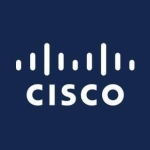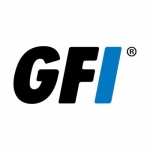
Chief Executive Officer at Spokes network
This solution enables effective internet control and efficient web filtering for small to medium businesses
Pros and Cons
- "Customer service and support for Sophos XG is excellent, and I would rate it as a ten."
What is our primary use case?
We mostly deploy Sophos XG to our customers because we are an IT system integrator. Our primary use case involves working with small to medium businesses to control internet usage, perform web filtering, application control, and manage bandwidth.
What is most valuable?
Sophos XG is popular among small to medium businesses, allowing them to control internet usage, perform web filtering, application control, and manage bandwidth. Additionally, AI assists in configuration, offering clues when users are stuck, which enhances user convenience and efficiency.
What needs improvement?
There is interest in seeing more features related to AI and customization in future releases.
For how long have I used the solution?
I have been working with Sophos XG for at least five to six years.
Buyer's Guide
Sophos XG
October 2025
Learn what your peers think about Sophos XG. Get advice and tips from experienced pros sharing their opinions. Updated: October 2025.
872,655 professionals have used our research since 2012.
What was my experience with deployment of the solution?
The installation process is straightforward and easy due to the training we receive. In new site setups, it's quick, but migrating from one vendor to another requires more planning and can take a couple of days.
What do I think about the stability of the solution?
I would rate the stability of Sophos XG as nine out of ten.
What do I think about the scalability of the solution?
I would rate the scalability of Sophos XG as nine out of ten.
How are customer service and support?
Customer service and support for Sophos XG is excellent, and I would rate it as a ten.
How would you rate customer service and support?
Positive
Which solution did I use previously and why did I switch?
I worked with other vendors like Cisco, Palo Alto, and Microsoft long ago.
How was the initial setup?
The initial setup varies by scenario: it's quick for new sites, but it takes longer for vendor migrations due to the need for seamless planning.
What about the implementation team?
I have a dedicated team of five engineers who handle installations.
What was our ROI?
There are cost savings compared to competitors, providing more financial benefits.
What's my experience with pricing, setup cost, and licensing?
Sophos XG offers good pricing compared to competitors. While there are extra expenses for additional features, overall licensing costs are well-regarded.
What other advice do I have?
I would rate Sophos XG as a nine out of ten. The cost savings make it suitable for small to medium businesses with 50 to 300 users. Overall, I am very satisfied with the product.
Which deployment model are you using for this solution?
On-premises
Disclosure: My company has a business relationship with this vendor other than being a customer.
Last updated: Feb 28, 2025
Flag as inappropriateDevOps Engineer at a tech vendor with 51-200 employees
Deployment is straightforward while interface complexity leads to challenges
Pros and Cons
- "My experience with deploying Sophos XG was easy."
- "The user-friendly interface of Sophos XG is acceptable but too complicated."
What is our primary use case?
Our main use case at the moment for Sophos XG is to create a site-to-site VPN with one of our clients. We cannot use AWS VPN, so we use Sophos XG.
We only used the VPN functionality. We did not explore other aspects of the product beyond the VPN capabilities.
What is most valuable?
The IPsec VPN is the only feature we utilized in Sophos XG. We did not explore the web and application filtering capabilities, and these features have not helped our organization in managing bandwidth or access to malicious sites.
What needs improvement?
The user-friendly interface of Sophos XG is acceptable but too complicated. There are many options and configurations, but it is very complicated to navigate through all those options if you are not familiar with the product.
Sophos XG can be improved by making the UI more user-friendly. They should add packet capture functionality in the UI instead of requiring users to access the server directly for this purpose, as it is a very useful tool that everyone needs. Additionally, it can be confusing when working in the AWS Marketplace, as users might mistakenly purchase the old version of Sophos XG.
For how long have I used the solution?
I have been using Sophos XG for three or four months. It is new, and we may discontinue using this product because it has not met our requirements.
What do I think about the scalability of the solution?
Considering the deployment flexibility of the Sophos XG firewall, hybrid deployments have not supported our organization's diverse technological infrastructure.
It is a bit early to tell, but Sophos XG is adequate for my company's growing needs at present.
How are customer service and support?
I have not tried their customer service and technical support.
How would you rate customer service and support?
Positive
Which solution did I use previously and why did I switch?
I have considered other solutions before Sophos XG, including pfSense, AWS firewall, and Kato firewall.
I was previously using AWS firewall and Kato firewall before switching to Sophos XG.
How was the initial setup?
My experience with deploying Sophos XG was easy.
What's my experience with pricing, setup cost, and licensing?
My experience with pricing, setup costs, and licensing was through AWS.
What other advice do I have?
I do not use the security heartbeat functionality.
I have not tried the synchronized security feature of the Sophos XG firewall.
I am not particularly interested in being a reference to the vendor. We do not use Sophos extensively, so I may not provide substantial insights.
What led me to consider changing was that we thought the VPN configuration was not working because of the product we used to work with, so we tried other alternatives.
On a scale of 1-10, I would rate Sophos XG a seven or eight, though this rating is limited by our minimal usage of the product.
Which deployment model are you using for this solution?
Public Cloud
If public cloud, private cloud, or hybrid cloud, which cloud provider do you use?
Amazon Web Services (AWS)
Disclosure: My company does not have a business relationship with this vendor other than being a customer.
Last updated: May 28, 2025
Flag as inappropriateBuyer's Guide
Sophos XG
October 2025
Learn what your peers think about Sophos XG. Get advice and tips from experienced pros sharing their opinions. Updated: October 2025.
872,655 professionals have used our research since 2012.
Executive at avian Technologies (pvt) ltd
Provides seamless management of network security with comprehensive feature integration
Pros and Cons
- "Sophos XG offers a robust solution with quota management features that are per IP and per user, which I find to be very effective."
- "The technical support could be improved, particularly in terms of response speed, as there were delays when working with their Indian support team."
What is our primary use case?
I was a distributor for Sophos XG products and worked with customers seeking network security solutions. In my current company, we previously used Sophos XG products extensively before switching to other options.
What is most valuable?
Sophos XG offers a robust solution with quota management features that are per IP and per user, which I find to be very effective. The ability to manage everything in one box is a significant advantage, eliminating the need to purchase separate products for email security and other features. The user interface is user-friendly, offering dashboards with widgets that provide speed and status, making configuration easy. Traffic management is facilitated through various configurations and user self-portals. Additionally, Sophos XG makes administrative tasks seamless by allowing easy navigation and configuration.
What needs improvement?
The technical support could be improved, particularly in terms of response speed, as there were delays when working with their Indian support team.
What do I think about the stability of the solution?
Traffic management is facilitated through various configurations.
What do I think about the scalability of the solution?
Sophos XG is primarily suitable for SMB and mid-level enterprise categories, but not typically chosen by high-end enterprises in Sri Lanka.
How are customer service and support?
The technical support could be improved, particularly regarding response speed when working with the Indian team.
How would you rate customer service and support?
Neutral
Which solution did I use previously and why did I switch?
Previously, we used Sophos UTM before transitioning to Sophos XG.
How was the initial setup?
The implementation of Sophos XG is straightforward and easy.
What about the implementation team?
I worked as a distributor and the setup was handled internally or with assistance from vendors.
Which other solutions did I evaluate?
During my research, I explored products like Fortinet FortiGate and Netgate pfSense.
What other advice do I have?
I rate Sophos XG eight out of ten. While the implementation was straightforward and easy, the technical support could use improvement. I recommend looking into improving the features and security validations to cater to the needs of bigger companies.
If public cloud, private cloud, or hybrid cloud, which cloud provider do you use?
Other
Disclosure: My company has a business relationship with this vendor other than being a customer. Reseller
Last updated: Apr 23, 2025
Flag as inappropriateManager, Information Technology at Travel Food Services Pvt ltd
A tool that has the ability to provide good reports
Pros and Cons
- "The solution's technical support is good."
- "In the product, the area revolving around SD-WAN has certain shortcomings where improvements are required."
What is our primary use case?
My company has normal web-based policies to restrict websites and allow certain legitimate websites. My company also has site-to-site VPNs and SSL VPNs, along with firewalls.
What is most valuable?
The most valuable feature of Sophos XG for our company's cybersecurity defense strategy stems from a mixture of all of the product's capabilities, which includes areas like web protection and VPN that are important when it comes to cybersecurity.
What needs improvement?
I would like the product to improve so that it can provide advanced SD-WAN, which can allow users to deal with infinite connections along with seamless bandwidth utilization.
In the product, the area revolving around SD-WAN has certain shortcomings where improvements are required.
It would be great if I could monitor a particular traffic from a network with Sophos XG.
For how long have I used the solution?
I have been using Sophos XG for around a year and a half. I am a customer of the tool.
What do I think about the stability of the solution?
It is a stable solution. Stability-wise, I rate the solution an eight to nine out of ten.
What do I think about the scalability of the solution?
Scalability-wise, I rate the solution a seven to eight out of ten.
There are around 200 users of the product in my company.
How are customer service and support?
The solution's technical support is good. I rate the technical support an eight out of ten.
How would you rate customer service and support?
Positive
Which solution did I use previously and why did I switch?
I have experience with Fortinet.
Sophos and Fortinet provide good features. Interface-wise and usage-wise, Fortinet is good. Fortinet provides a simple interface, while it is an area that is a bit complex in Sophos. Feature-wise, Sophos and Fortinet are similar.
How was the initial setup?
I rate the product's initial setup phase at six or seven on a scale of one to ten, where one is difficult, and ten is easy.
The solution is deployed on the cloud and on-premises.
The solution can be deployed in a day.
What's my experience with pricing, setup cost, and licensing?
The product is expensive. I rate the product price a six on a scale of one to ten, where one is low price and ten is high price.
What other advice do I have?
Sophos XG has the ability to provide good reports.
I rate the tool an eight to nine out of ten.
Which deployment model are you using for this solution?
Hybrid Cloud
Disclosure: My company does not have a business relationship with this vendor other than being a customer.
CTO at GCET
Complex setup and modular cloud-native pipelines with good community resources
Pros and Cons
- "The valuable features include cloud-native integration, which makes it highly available and efficient in modern containerized environments."
- "One area of improvement is the lack of cross-cluster capability, meaning you need different sets of tasks and pipelines for each Kubernetes cluster."
What is our primary use case?
Actually, we are using Tekton for creating CI/CD pipelines for building and deploying applications to different environments.
How has it helped my organization?
It helped a lot in terms of automation. We sometimes use Tekton for purposes like sending emails, running batch jobs, and similar tasks.
What is most valuable?
The valuable features include cloud-native integration, which makes it highly available and efficient in modern containerized environments. Another feature is the modular pipeline that allows reusing CI/CD manifests for different purposes. This modularity helps in reducing redundancy and maintaining a streamlined process.
What needs improvement?
One area of improvement is the lack of cross-cluster capability, meaning you need different sets of tasks and pipelines for each Kubernetes cluster. Tekton also has an unstable API with frequent changes, making it challenging to maintain consistency across versions. Additionally, there's a need for a better dashboard and built-in authentication mechanisms.
For how long have I used the solution?
It's about one and a half years we have been working with Tekton.
What do I think about the stability of the solution?
Tekton is quite stable when used in a well-established Kubernetes cluster. The stability largely depends on the stability of the Kubernetes environment itself, which is designed for high availability.
What do I think about the scalability of the solution?
Tekton's scalability is one of its most advanced features. Since it uses the underlying Kubernetes infrastructure, it can scale easily if the Kubernetes cluster is sufficiently large. I would rate it eight out of ten for scalability.
How are customer service and support?
We primarily used community resources like Stack Overflow for addressing our issues and did not directly contact Tekton's customer service.
How would you rate customer service and support?
Positive
Which solution did I use previously and why did I switch?
In my previous company, we used GitLab and Jenkins for creating CICD pipelines. Currently, Tekton is the primary tool we are using, with Jenkins as a backup solution if Tekton encounters any issues.
How was the initial setup?
The initial setup was manageable but required extensive reading and understanding of documentation. If the Kubernetes cluster is already in place, the setup can be completed in less than ten minutes.
What about the implementation team?
The deployment of Tekton was done in-house with a team of six to seven people handling deployment, creating CI/CD pipelines, and maintaining the solution.
What's my experience with pricing, setup cost, and licensing?
Tekton is an open-source tool, meaning there are no setup costs associated with it. I would rate the cost at one, indicating it is free to use.
Which other solutions did I evaluate?
In my previous company, we used GitLab and Jenkins for similar purposes.
What other advice do I have?
My advice is to avoid using Tekton if possible due to its complex setup and lack of user-friendly features like a comprehensive dashboard and built-in authentication mechanisms.
I'd rate the solution eight out of ten.
Which deployment model are you using for this solution?
On-premises
Disclosure: My company has a business relationship with this vendor other than being a customer. partner
Pre-Sales Architect at network techlab
Offers visibility into network information, sources, destinations, and threats
Pros and Cons
- "The tool's most valuable feature is threat protection and DLP features. So far, basic DLP features like content protection and blocking. Furthermore, for remote users, features such as back filtering and application control are available, allowing for command and control from our side. It is very easy to understand policy applications."
- "One feature I would like to add is remote wipeout capability. This would be useful in cases where a user leaves the organization and fails to return their laptop. Remote wipeout would allow for the deletion of data from the device with a single command. Regarding technical support from Sophos XG, it's generally satisfactory. However, the response time could be improved. It takes around one hour to receive assistance, but reducing this to 30-45 minutes would benefit us."
What is most valuable?
The tool's most valuable feature is threat protection and DLP features. So far, basic DLP features like content protection and blocking. Furthermore, for remote users, features such as back filtering and application control are available, allowing for command and control from our side. It is very easy to understand policy applications.
It has multi-console features, where you can designate administrators or super admins. There's also a read-only feature available. Visibility features are included in XDR. This provides information on user impact, potential threats on specific machines, source and destination IPs, setup firewall details, and unique identifiers for each machine. Another notable feature is network isolation, ensuring that data remains secure by isolating affected machines from others.
Sophos XG offers visibility into network information, sources, destinations, and threats. Depending on the policies applied, users may monitor specific issues without blocking them. However, policies that block threats should be applied.
What needs improvement?
One feature I would like to add is remote wipeout capability. This would be useful in cases where a user leaves the organization and fails to return their laptop. Remote wipeout would allow for the deletion of data from the device with a single command. Regarding technical support from Sophos XG, it's generally satisfactory. However, the response time could be improved. It takes around one hour to receive assistance, but reducing this to 30-45 minutes would benefit us.
The tool has only a base DLP feature. It needs to have a full DLP feature with additional licensing.
For how long have I used the solution?
I have been working with the product for ten years.
What do I think about the stability of the solution?
I rate the tool's stability an eight point five out of ten.
What do I think about the scalability of the solution?
I rate the solution's scalability a seven point five out of ten.
How was the initial setup?
The tool's installment is easy.
What's my experience with pricing, setup cost, and licensing?
The tool's pricing is cheaper compared to other alternative products.
What other advice do I have?
Sophos XG has a lab center where they analyze signatures and automatically update them on the product. This eliminates the need for manual updates on individual machines or centers. Additionally, it has features like MDR and management response features. So, Sophos XG seems to have a roadmap in place.
I would recommend the product based on the situation. Cortex, a next-generation antivirus for larger enterprises, would likely provide sufficient coverage. It's also known for its scalability and visibility features, including root cause analysis and terminology features.
I rate the overall solution an eight out of ten.
Disclosure: My company has a business relationship with this vendor other than being a customer. Partner
Technical Support Engineer at Digitaltrack
Has good technical support services, but the GUI needs enhancement
Pros and Cons
- "We recommend Sophos XG as a priority as it is much more reliable and has efficient technical assistance."
- "We encounter difficulties while navigating through certain features and functionalities of the product."
What needs improvement?
We encounter difficulties while navigating through certain features and functionalities of the product. The GUI could be much more transparent.
For how long have I used the solution?
We have been using Sophos XG for two years. At present, we use the latest version.
What do I think about the stability of the solution?
I rate the product’s stability an eight out of ten.
What do I think about the scalability of the solution?
We have around 15 to 20 customers using Sophos XG. It is suitable for larger companies. We have around 200 technical engineers in our organization managing it. I rate the scalability a nine out of ten.
How are customer service and support?
The technical support team is friendly and supportive in terms of technical assistance.
How would you rate customer service and support?
Positive
Which solution did I use previously and why did I switch?
We are working with CheckPoint, SonicWall, and FortiGate.
How was the initial setup?
The deployment method involves navigating through several pages, such as selecting the country and configuring LAN and WAN ports, before reaching the manual configuration stage. Instead, simplifying the process by allowing users to log in directly to the dashboard and initiate configuration without additional prompts could be helpful. The implementation time depends on specific firewall requirements.
What's my experience with pricing, setup cost, and licensing?
The product is more expensive than SonicWall. Our customers compare devices for office compatibility, such as Sophos XG 4100 and SonicWall NSA 2300, and question license cost disparities.
I rate the pricing a six out of ten.
What other advice do I have?
The product’s new variant allows for faster processing of data packets from LAN to WAN, surpassing the capabilities of an 8G firewall. It provides threat prevention features, including WAF, IPS, and AV. We have configured SSL VPN capabilities for different branches, which have been working efficiently. For our minimalistic usage, it has been performing well in transferring data from on-premise devices. It helps us generate detailed reports on the dashboard. The product’s integration with Sophos Central enhances security architecture by enabling centralized management under a single dashboard.
We recommend Sophos XG as a priority as it is much more reliable and has efficient technical assistance. It is much easier for configuration, web filtering, or web extension than one of its competitors.
I rate it a seven out of ten.
Disclosure: My company has a business relationship with this vendor other than being a customer.
Network consultant at Juniper Solutions Ltd
Crucial for safeguarding data, enforcing user access controls, and ensuring secure communication
Pros and Cons
- "I particularly like the visibility it provides into network traffic, allowing us to identify and address issues efficiently."
- "It would be beneficial if the platform provided more flexible support for a variety of devices."
What is our primary use case?
I use Sophos XG for network security and VPN policies. It is crucial for safeguarding data, enforcing user access controls, and ensuring secure communication. The firewall features, like application control and intrusion prevention, provide a strong defense against cyber threats. With centralized management, setting up and monitoring policies becomes easy, and the VPN capabilities ensure secure remote access for our team.
What is most valuable?
What I like about Sophos XG is its versatility in tailoring security features to our specific needs. In our environment where certain services are only needed part-time, the flexibility to deploy services selectively is valuable. The comprehensive protection, from firewall to market inspection and routing, ensures a robust defense. I particularly like the visibility it provides into network traffic, allowing us to identify and address issues efficiently.
What needs improvement?
While Sophos XG has been reliable for remote troubleshooting sessions, it would be beneficial if the platform provided more flexible support for a variety of devices. The user interface is intuitive for those familiar with it, but improving accessibility and user guidance could be beneficial for newcomers. Additionally, although the features are comprehensive, fair pricing and more flexibility with device compatibility could make it even more appealing in the market.
For how long have I used the solution?
I have been working with Sophos XG for two years.
What do I think about the stability of the solution?
It is quite stable.
What do I think about the scalability of the solution?
I would give it a ten out of ten for scalability. We have approximately 100 users.
How are customer service and support?
Tech support for Sophos XG is great. They are professional, respond quickly, and help resolve issues effectively.
Which solution did I use previously and why did I switch?
Previously, I have used Fortinet and SonicWall.
How was the initial setup?
The initial setup of Sophos XG is not complex, especially with familiarity and experience. As you work with it over time, it becomes more straightforward, and mastery comes with continuous use. Deployment depends on specific organizational needs, but in general, it involves configuring the connection between the internet and the local network, setting up VLANs, and defining firewall rules. For me, as a consultant, the process varies based on different client scenarios. Sophos XG simplifies the deployment process, and once configured, it efficiently manages network access for different user categories.
What about the implementation team?
I have done both in-house deployments and collaborated with integrators based on the client's preference. As a consultant, I assess the needs, design the setup, and can either guide the in-house team through the deployment or handle it myself. The process involves configuring the live site for optimal security, and in some cases, I work remotely on existing setups. Sophos XG's flexibility makes it feasible for both in-house and external experts to manage the deployment effectively.
What's my experience with pricing, setup cost, and licensing?
The payment structure can depend on the reseller or partner. Typically, it involves getting the device first, and then the licensing is managed, often in US dollars, through the partner or reseller. The process ensures proper handling and support through authorized channels.
What other advice do I have?
I would recommend Sophos XG for anyone looking to build robust IT systems. It is ideal if you have a clear vision of your IT infrastructure and want a solution that can seamlessly integrate and enhance security. The flexibility to tailor it to specific needs makes Sophos XG a valuable choice for building a reliable and secure network. Overall, I would rate it as a ten out of ten.
Which deployment model are you using for this solution?
On-premises
Disclosure: My company does not have a business relationship with this vendor other than being a customer.
Buyer's Guide
Download our free Sophos XG Report and get advice and tips from experienced pros
sharing their opinions.
Updated: October 2025
Product Categories
FirewallsPopular Comparisons
Fortinet FortiGate
Netgate pfSense
OPNsense
Cisco Secure Firewall
Palo Alto Networks NG Firewalls
WatchGuard Firebox
Cisco Meraki MX
Check Point Quantum Force (NGFW)
Azure Firewall
SonicWall TZ
Sophos XGS
Fortinet FortiGate-VM
Juniper SRX Series Firewall
SonicWall NSa
KerioControl
Buyer's Guide
Download our free Sophos XG Report and get advice and tips from experienced pros
sharing their opinions.
Quick Links
Learn More: Questions:
- Sophos XG 210 vs Fortigate FG 100E
- What Is The Biggest Difference Between Sophos UTM and Sophos XG?
- What is the biggest difference between Sophos XG and FortiGate?
- Which firewall is better and why: Sophos XG 210 or Fortinet FortiGate 100E?
- Which solution do you prefer: Fortinet FortiGate or Sophos XG?
- What are the main differences in features between Sophos XG and FortiGate 80F?
- Fortinet FortiGate or Sophos XG?
- How does Meraki MX compare with Sophos XG?
- Which firewall to choose for an SMB to prevent malware damage: Cisco Firepower or Sophos XG?
- Looking for a technical comparison between Sophos XG550 and Fortinet FortiGate 600E

















